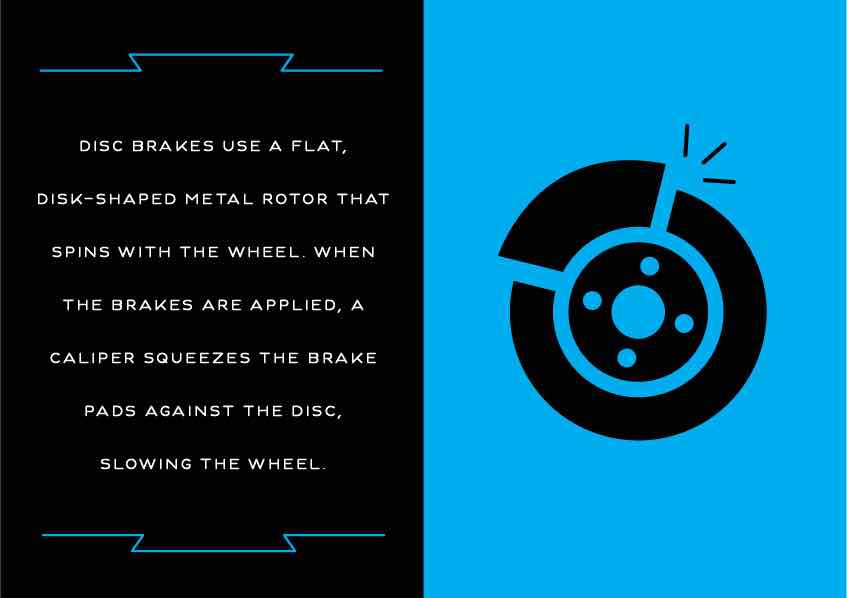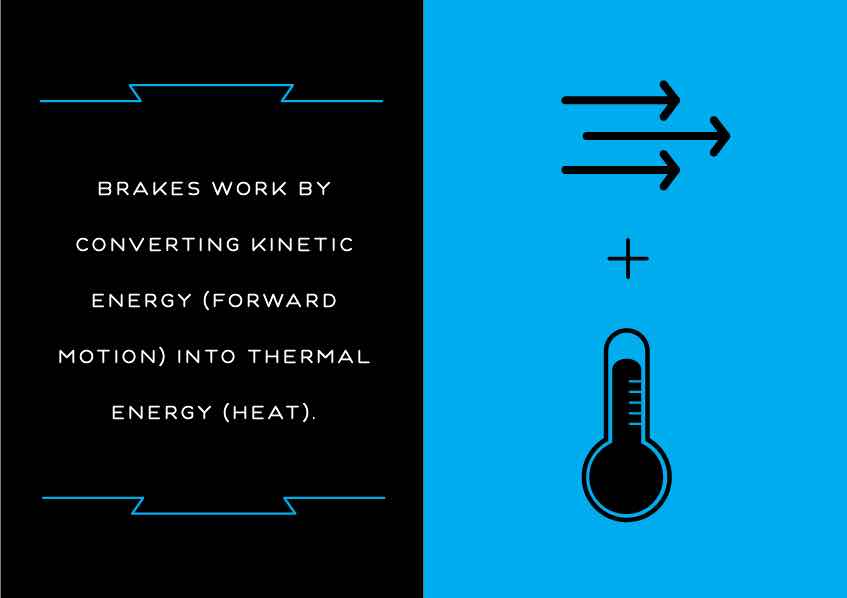
Brakes — they’re a vital part of every vehicle, and having a working understanding of this system is essential as you get to work.
First of all, you’re able to stop a car based on two principles: friction and heat. Brakes work by converting kinetic energy (forward motion) into thermal energy (heat). By applying resistance, or friction, to a turning wheel, a vehicle's brakes cause the wheel to slow down and eventually stop, creating heat as a byproduct.
When you step on the brake pedal, you are pushing against a rod/plunger in the master cylinder. A proportion valve between the master cylinder and the brakes adjusts the pressure as necessary. This forces brake fluid through a series of tubes and hoses to the braking unit at each wheel. This is the hydraulic system.
Working in tandem, the anti-lock braking system (ABS) is connected to the hydraulic and electronic systems. The electrical system has sensors on all four wheels, and instantly adjusts brake pressure during a hard stop to prevent wheel lock-up.

There are two common types of brakes — drum and disc (or “disk”). The front brakes do most of the work, which makes sense — the vehicle’s weight pushes forward while stopping. The overwhelming majority of modern cars come equipped with disc brakes, but it’s important to understand drum brakes as well since you’ll still see them in some light-duty and lightweight cars, as well as older vehicles.
Drum brakes work like this: When the driver steps on the brake pedal, hydraulic pressure goes into the wheel cylinder, which in turn pushes out curved shoes located inside the drum, slowing the wheel.

Disc brakes use a flat, disk-shaped metal rotor that spins with the wheel. When the brakes are applied, a caliper squeezes the brake pads against the disc, slowing the wheel.
Brake pads apply pressure to the brake rotor, causing the vehicle to slow down. For more information on choosing the right brake pads for you, check out “Choosing The Right Brake Pads.”
- Prior to using or installing any of these products always consult your vehicle’s owner’s manual for compatibility and warranty information.
- Always take appropriate safety precautions when working on or operating your vehicle. Take the necessary steps to help prevent injuries; always use protective gear like helmets, safety goggles, and gloves.


Don't miss out on new content
Thanks for signing up. Set your password and start earning reward points for everything you do on the site.
You already have a Team Valvoline account. Sign in here.
Did you forget your password?